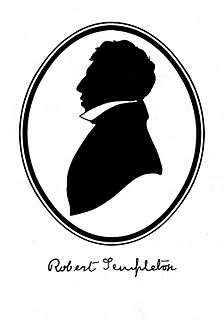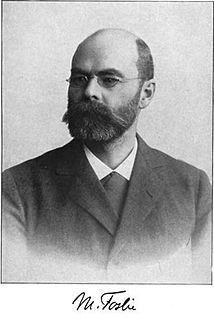Related Research Articles

Marquess of Donegall is a title in the Peerage of Ireland held by the head of the Chichester family, originally from Devon, England. Sir John Chichester sat as a Member of Parliament and was High Sheriff of Devon in 1557. One of his sons, Sir Arthur Chichester, was Lord Deputy of Ireland from 1605 to 1616. In 1613, he was raised to the Peerage of Ireland as Baron Chichester, of Belfast in County Antrim. He died childless in 1625 when the barony became extinct.

The Ulster Museum, located in the Botanic Gardens in Belfast, has around 8,000 square metres of public display space, featuring material from the collections of fine art and applied art, archaeology, ethnography, treasures from the Spanish Armada, local history, numismatics, industrial archaeology, botany, zoology and geology. It is the largest museum in Northern Ireland, and one of the components of National Museums Northern Ireland.

Robert Templeton was a naturalist, artist, and entomologist, and was born at Cranmore House, Belfast, Ireland.

William Thompson was an Irish naturalist celebrated for his founding studies of the natural history of Ireland, especially in ornithology and marine biology. Thompson published numerous notes on the distribution, breeding, eggs, habitat, song, plumage, behaviour, nesting and food of birds. These formed the basis of his four-volume The Natural History of Ireland, and were much used by contemporary and later authors such as Francis Orpen Morris.
Robert Patterson, FRS (1802–1872) was an Irish businessman and naturalist born in Belfast, Ireland.

The Belfast Natural History and Philosophical Society was founded in 1821 to promote the scientific study of animals, plants, fossils, rocks and minerals.

Belfast Castle is a castle on the slopes of Cavehill Country Park in Belfast, Northern Ireland, in a prominent position 400 feet (120 m) above sea level. Its location provides unobstructed views over the City of Belfast and Belfast Lough. The current castle is a Victorian structure, built between 1867 and 1870, and is listed as being Grade B+. The main entrance into the Belfast Castle Demesne is now where Innisfayle Park meets Downview Park West, just off the Antrim Road. The original main entrance into the demesne was formerly on the Antrim Road itself, where Strathmore Park now meets the Antrim Road.
John Templeton (1766–1825) was a pioneering Irish naturalist, sometimes referred to as the "Father of Irish Botany". He was a leading figure in Belfast's late eighteenth century enlightenment: he attached himself to democratic programme of the United Irishmen, and figured prominently in the town's scientific and literary societies.
Robert John Welch was an Irish photographer interested in natural history, particularly mollusca. Welch, born in Strabane, County Tyrone, lived for a time in Enniskillen. He was the son of an accomplished Scottish amateur photographer. After the death of his father, Welch established his own business in 1883 in Lonsdale Street in Belfast. Much of his time was spent taking pictures that reflected the life of the people and the contemporary landscape.

William Henry Harvey, FRS FLS was an Irish botanist and phycologist who specialised in algae.

George Crawford Hyndman (1796–1867) was an Irish auctioneer and amateur biologist.

Mikael Heggelund Foslie was a Norwegian botanist and algaeologist. Foslie was curator of the Royal Norwegian Scientific Society Museum in Trondheim.
The history of phycology is the history of the scientific study of algae. Human interest in plants as food goes back into the origins of the species and knowledge of algae can be traced back more than two thousand years. However, only in the last three hundred years has that knowledge evolved into a rapidly developing science.

The Belfast Naturalists' Field Club is a club of naturalists based in Belfast, Northern Ireland. Founded in 1863, the club was an important part of the education system for Victorian naturalists and worked largely through first-hand field studies. It has been credited with playing an important role in the elucidation of glacial and post-glacial sea levels, climates and fossil beaches and issuing the first of the regional handbooks for meetings of the British Association for the Advancement of Science as far back as 1874. The club has four sections, Archeology & History, Botany, Geology and Zoology, and has published several books and a periodical. The Herbarium of the BNFC is now in the Ulster Museum.
Arthur Wilson Stelfox was an Irish naturalist and architect. Stelfox was a recognised authority on Hymenoptera and on non-marine Mollusca especially the genus Pisidium. He also made important contributions to scientific knowledge concerning Irish botany and on identifying and describing remains from prehistoric sites in Ireland.
James MacAdam was an Irish naturalist and geologist.
Edmund Getty MRIA was an Irish antiquarian and naturalist.
C. Douglas Deane O.B.E., M.Sc., F.L.S. Ornithologist.

Nendrum Monastery was a Christian monastery on Mahee Island in Strangford Lough, County Down, Northern Ireland. Medieval records say it was founded in the 5th century, but this is uncertain. The monastery came to an end at some time between 974 and 1178, but its church served a parish until the site was abandoned in the 15th century. Some remains of the monastery can still be seen.

The Natural History of Ireland is a four volume work by William Thompson. The first three volumes were published by Reeve and Benham, London between 1849 and 1851. Volume 4 was published by Henry G. Bohn, London in 1856. The Natural History of Ireland is very influential of later developments.
References
- Nash, R. and Ross, H.C.G. The development of natural history in early 19th century Ireland in From Linnaeus to Darwin: commentaries on the history of biology and geology Society for the bibliography of Natural History 13:27-
- Foster, John Wilson; Helena C. G. Chesney, eds. (1997). Nature in Ireland: A Scientific and Cultural History . Dublin: Lilliput Press. ISBN 1-874675-29-5.